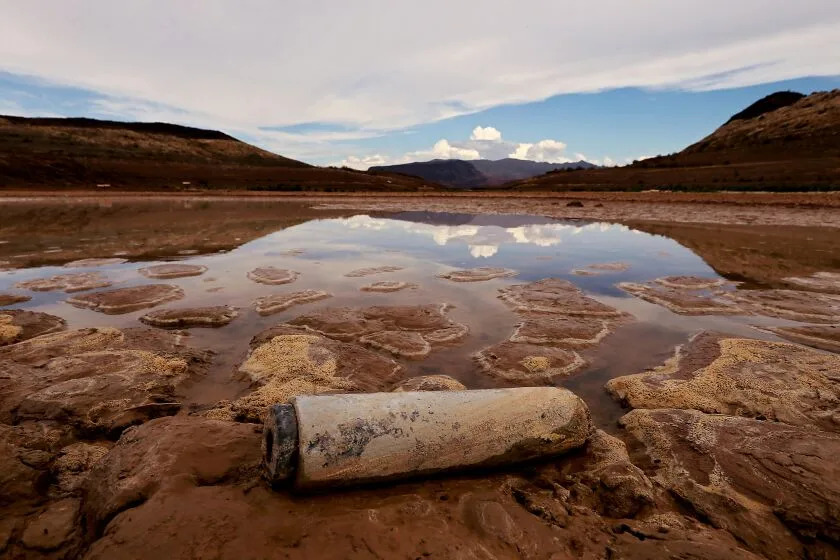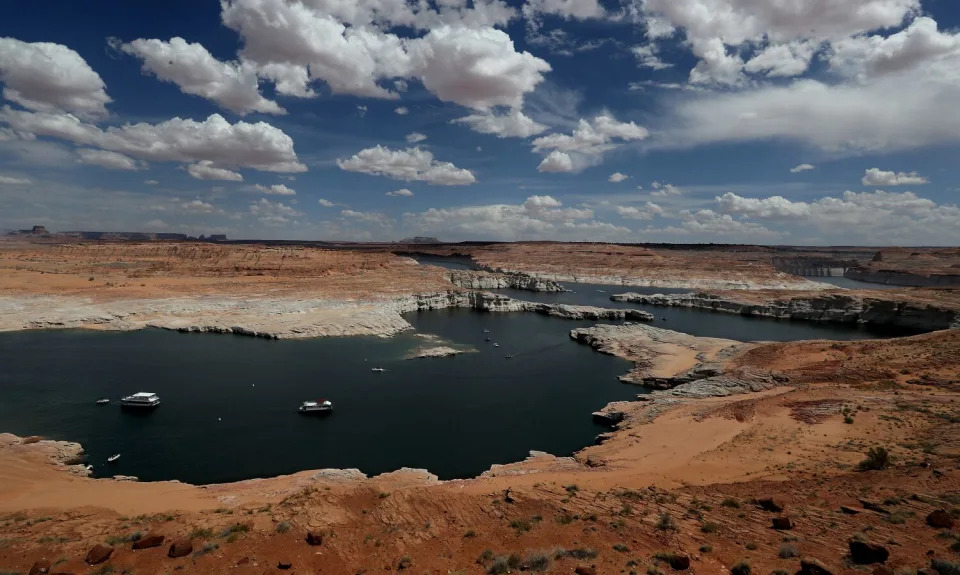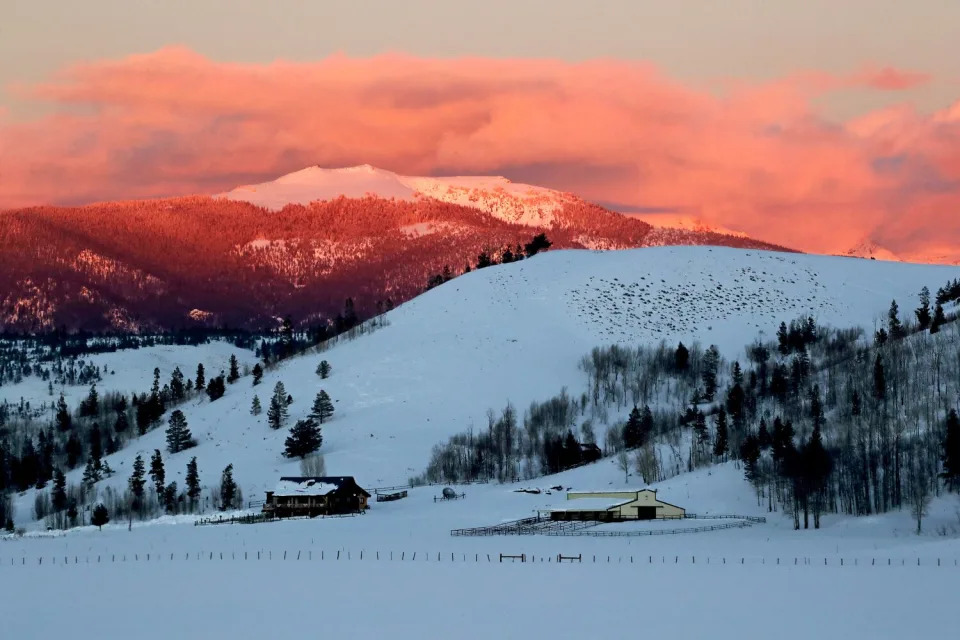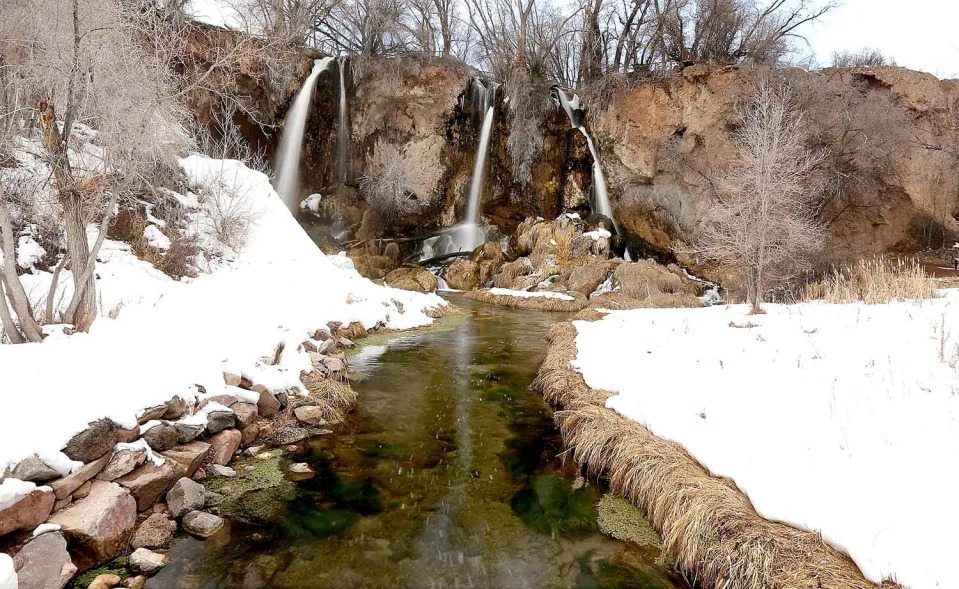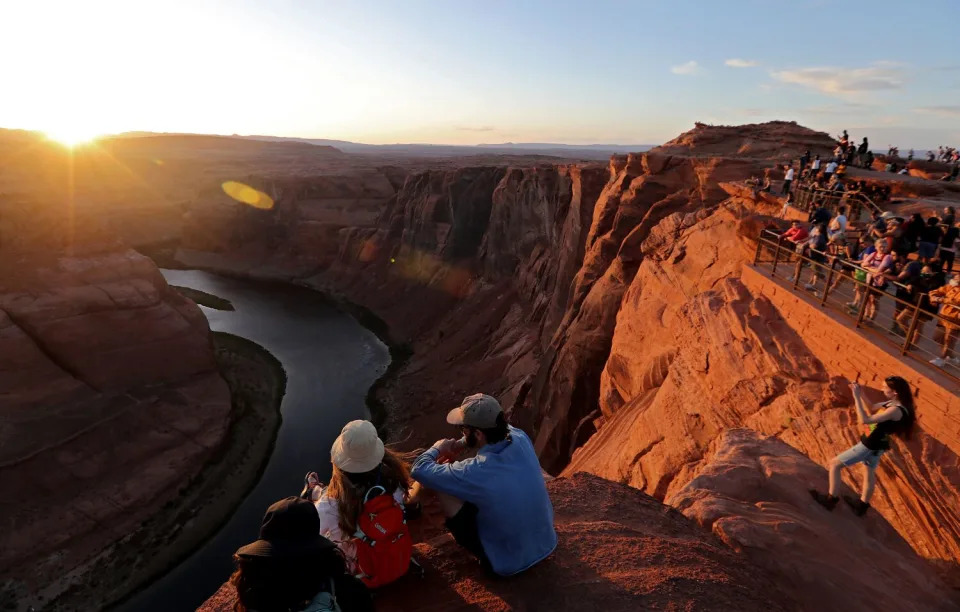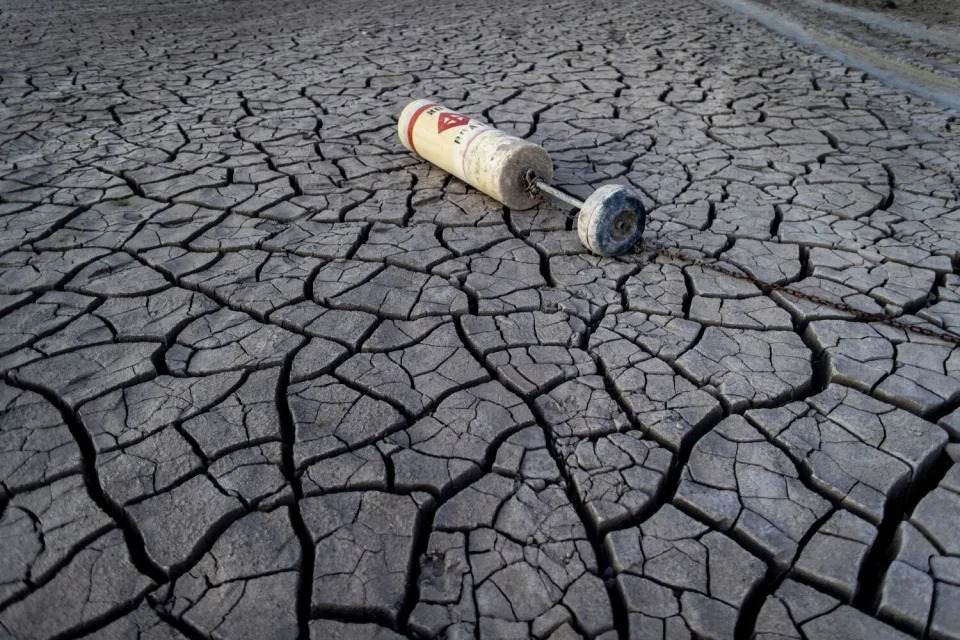The New York Times
In Texas Oil Country, an Unfamiliar Threat: Earthquakes
J. David Goodman – January 28, 2023
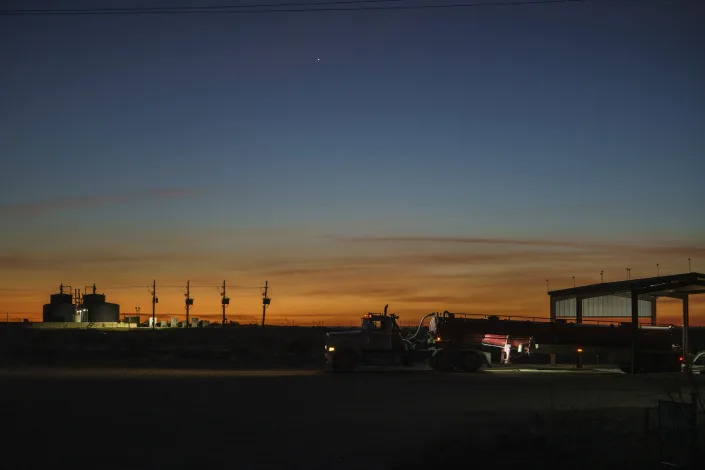
PECOS, Texas — The West Texas earth shook one day in November, shuddering through the two-story City Hall in downtown Pecos, swaying the ceiling fans at an old railroad station, rattling the walls at a popular taqueria.
The tremor registered as a 5.4 magnitude earthquake, among the largest recorded in the state. Then, a month later, another of similar magnitude struck not far away, near Odessa and Midland, twin oil country cities with relatively tall office buildings, some of them visible for miles around.
The earthquakes, arriving in close succession, were the latest in what has been several years of surging seismic activity in Texas, a state known for many types of natural disasters but not typically, until now, for major earth movements. In 2022, the state recorded more than 220 earthquakes of 3.0 magnitude or higher, up from 26 recorded in 2017, when the Bureau of Economic Geology at the University of Texas began close monitoring.
So unheard-of were strong earthquakes in the flat, oil-rich expanse about a six-hour drive west of Austin that some residents at first mistook the November quake for a powerful gust of wind. Lloyd Chappell, a retired propane deliveryperson who was in his recliner at the time, thought one of his grown sons was making a joke of shaking his chair. But no one was there. His water sloshed around in his glass for 30 long seconds.
“We’ve heard noises before — out there in the oil field, they drop big tanks, or things like that,” said Chappell, 66. “But I’d never felt that before.”
The vast majority of the temblors have been concentrated in the highly productive oil fields of the Permian Basin, particularly those in Reeves County, north and west of the city of Pecos. The county’s official population of 14,000 does not account for thousands of mostly male transient workers staying in austere “man camps” and RV parks, brought there by the promise of good pay in exchange for long hours, stark terrain and dangerous work.
Now earthquakes have become part of the same calculation.
“In West Texas, you love the smell of the oil and gas patch because it’s the smell of money,” said Rod Ponton, a former Pecos city attorney who once unintentionally attained international fame by appearing as a worried cat during a court hearing on Zoom. “If you have to have the ground shaking every two or three months to make sure you have a good paycheck coming in every month, you’re not going to think twice about it.”
The economy of Pecos and a handful of surrounding towns — some little more than sand-blown highway intersections and crowded gas station convenience stores — revolves around the oil fields.
John Briers moved several months ago to a man camp in Orla, in Reeves County, to take a job at one of two convenience stores because the pay was twice as much as he was getting in Houston. “It’s nice to have so much space,” he said of the area. “But it’s two hours from the nearest cardiologist.”
When the November earthquake struck, Briers, 55, was working at the store, whose central seating area acts as an informal workers cafeteria. The force was enough to shake the building, he said, and to push a large mobile crane, parked nearby, into a trailer. Briers likened it to the artillery he felt while serving in the military in Afghanistan.
On a recent weekday, a lunchtime crowd of mostly men in dusty work boots and shirts emblazoned with company logos streamed into the store from white pickup trucks, mostly uninterested in discussing earthquakes. Had they felt any of the quakes that seismic monitors showed striking across the oil fields?
“No.”
“No, sir.”
“Nobody really cares while the money is there,” said Nick Granado, 31, stopping briefly before grabbing lunch. He said he had been at home in Pecos with his wife and 2-year-old child at the time of the November earthquake. “It was different,” he said of the shaking. “But I wasn’t scared.”
In Reeves County, oil and gas production has increasingly meant hydraulic fracturing, a process of extraction that produces, as a byproduct, a huge amount of wastewater. Some of that wastewater is reused in fracking operations, but most of it is injected back under the ground. It is that process of forcing tens of billions of gallons of water into the earth that, regulators and geoscientists agree, is to blame for many of the earthquakes.
The connection between wastewater disposal and earthquakes has been long understood. Other states with substantial fracking operations have also seen the ground shake as a result, including Oklahoma, where a similarly rapid increase in earthquakes more than a decade ago included a 5.6 magnitude quake in 2016 that forced the shutdown of several wastewater wells.
Getting rid of the “produced” water is an important business in West Texas, and locations labeled “SWD” — for saltwater disposal — dot the landscape of drilling rigs and truck-worn roads. Each of the past few years, about 168 billion gallons of wastewater have been disposed of in this way, according to data from the Railroad Commission of Texas, which regulates the oil industry.
Texas only recently began its statewide program of monitoring for earthquakes, after a series of small quakes in North Texas rattled residents of Dallas and Fort Worth. The monitoring started in 2017 — just as petroleum development accelerated in the Permian Basin, particularly in and around Reeves County — and began to detect the increasing seismic activity.
“It was really very fortuitous,” said Peter Hennings, the principal investigator for the Center for Integrated Seismicity Research at the University of Texas.
Hennings said that while natural earthquakes can occur in West Texas, they can also be induced through human activity: the injection of a large amount of water in a short period of time adds fluid pressure under the earth, which essentially decreases the “clamping” between rocks along natural faults and allows them to slip, creating an earthquake.
And seismologists have established a relationship between smaller earthquakes and larger ones, Hennings said: The more small earthquakes you have, the greater the likelihood of a bigger one.
The problem can be addressed by cutting back on the amount of saltwater being injected back into the ground. Oklahoma, for example, did so in recent years and has seen a reduction in the number of earthquakes.
In 2021, the Texas Railroad Commission noted “an unprecedented frequency of significant earthquakes” in and around Reeves County and asked companies to implement their own wastewater plans, hoping to decrease the number of 3.5 magnitude or greater earthquakes by the end of this year.
To address earthquakes outside Odessa and Midland, state regulators suspended permits for deep disposal wells. And just north of the border with Texas, New Mexico regulators have been taking their own steps to control saltwater disposal, including $2 million in fines to Exxon over compliance failures.
The fracking issue has been a big one for Texas environmental groups, which have raised concerns about pollution, climate change, social inequity — and now earthquakes. “It is past time for the Railroad Commission of Texas to update the rules on injection wells,” said Cyrus Reed, the conservation director for the Sierra Club’s Lone Star Chapter, adding that there should be limits on injecting “polluted fracking wastewater” in places impacted by seismic activity.
For local officials in West Texas, the earthquakes have presented new and unforeseen concerns about the structural integrity of buildings and buried pipes, as well as basic questions such as, what are you supposed to do in an earthquake?
“It brought to light that we need to do some safety training,” said the Pecos city manager, Charles Lino. He had been in a staff meeting on the second floor of City Hall — a building Lino described as “very old” — when the floor began to move for what felt like a minute during the November earthquake, whose epicenter was northwest of town.
“Most of the staff were a little shaken and were, like, what do we do?” he said. “I don’t know how to react either, because I’m from this area.” Lino said the city was just beginning to develop its earthquake training.
Months earlier, in March, the head of emergency management for the county, Jerry Bullard, began keeping track of earthquakes. “There were two yesterday and one today,” he said on a recent weekday, looking at his list. He presented his catalog to the county’s leaders at a meeting in December. “They were kind of surprised,” he said.
His concern has been focused on the area’s older infrastructure, including the three-story courthouse in Pecos. But the county has been traditionally hands-off when it comes to building codes in unincorporated areas. “This county does not even have a fire code out in the county,” Bullard said.
At the same time, storing additional wastewater — with its volatile mix of chemicals — above ground in order to avoid injecting too much into the earth has created a new hazard, Bullard said. There were two explosions this month at saltwater disposal facilities in the county, setting off fires and “a black stream of smoke” visible for miles around, he said.
So far, the earthquakes have not caused much notable damage. Some residents said they noticed new cracks in their walls or patios, or a roof that appeared to slant a little more than before. Earthquake insurance is not something people generally purchase in West Texas, although there has been talk of it now, particularly in the larger cities of Odessa and Midland.
“We have tall buildings — not a lot of tall buildings — but people are concerned about foundations,” said Javier Joven, the mayor of Odessa, who met with state regulators and Midland leaders about the issue in 2021. Most of the area’s taller buildings were constructed decades ago, without the requirements now common in earthquake-prone areas, officials said. (Several in Midland have long sat empty, with some recently demolished or slated to be.)
So far, he said, officials have not taken steps to change building codes to address earthquakes, which could add significant new costs to construction. In the meantime, each tremor has become a topic of conversation. The mayor said he had felt at least three.
“The big popular discussion out here is: Did you feel it? Did you feel it?” he said. “And everyone goes on Facebook: I felt it. I felt it.”








